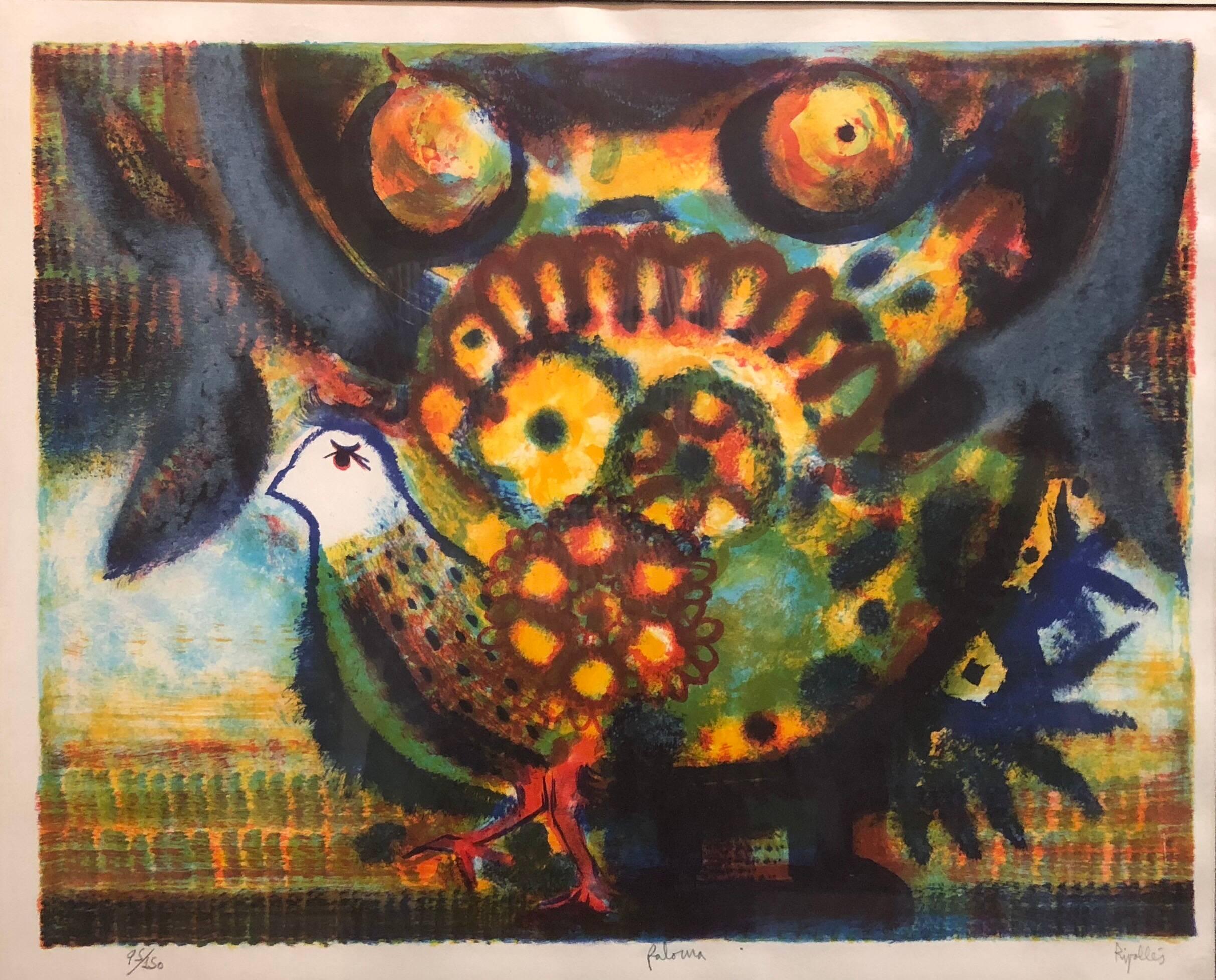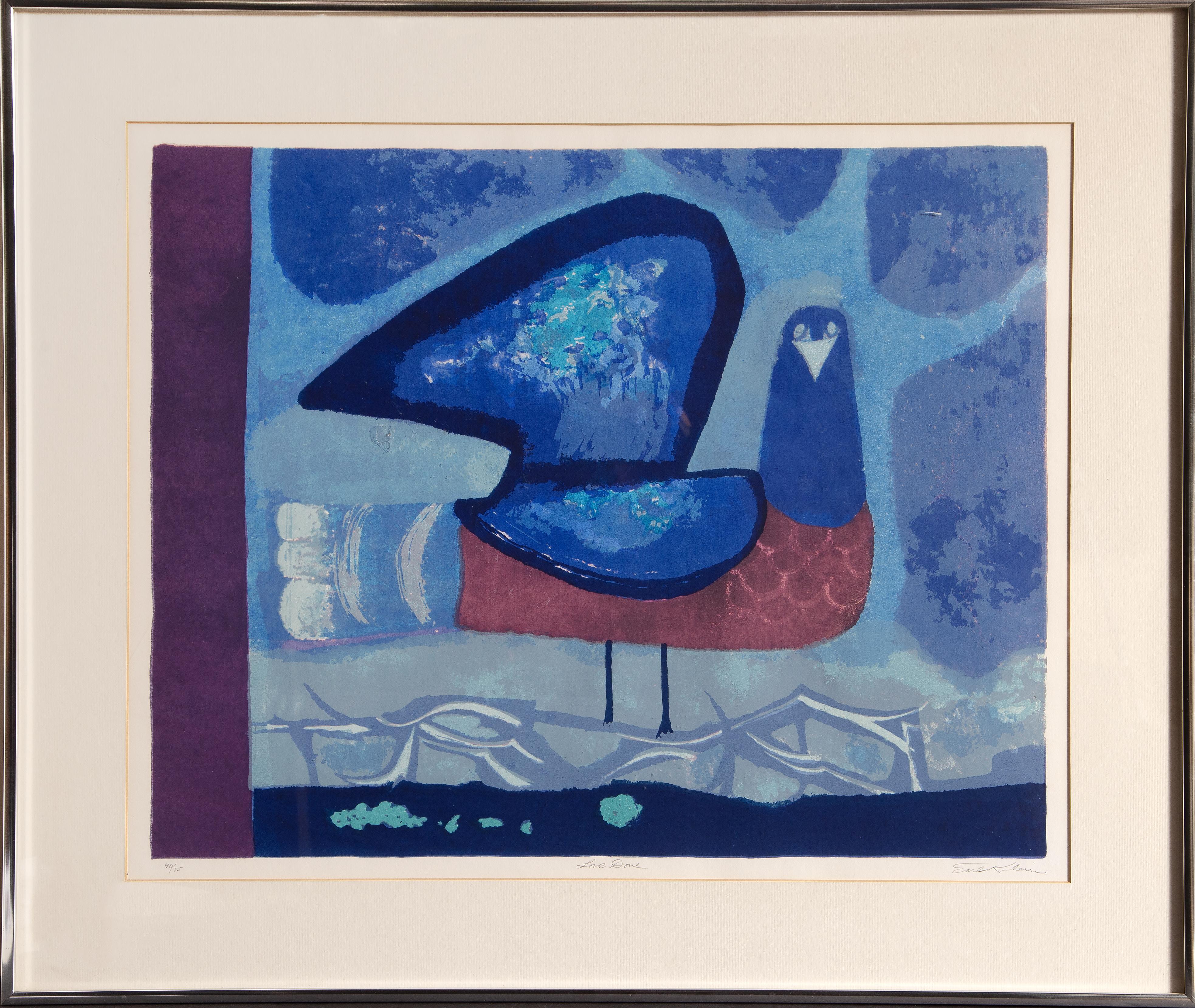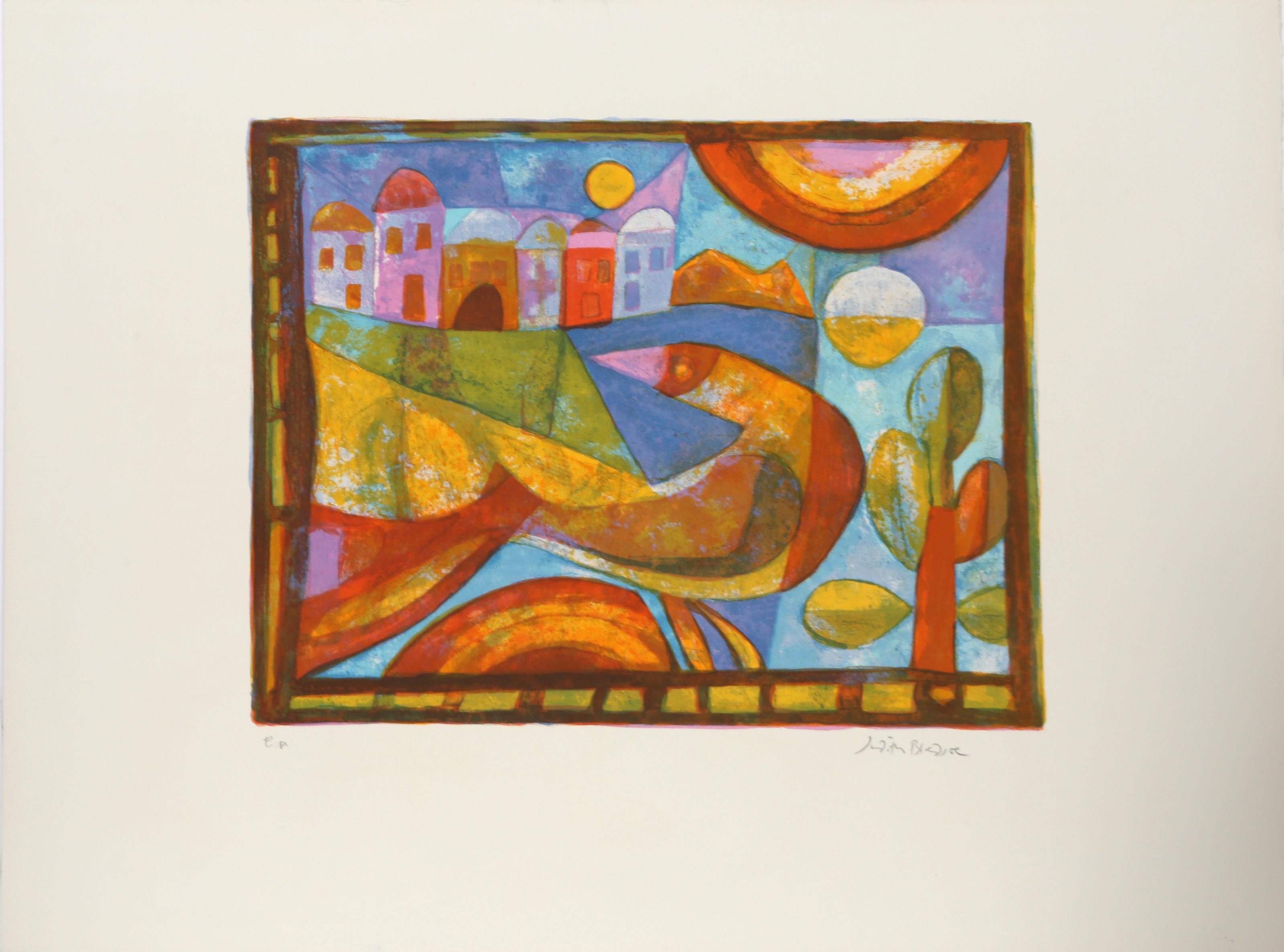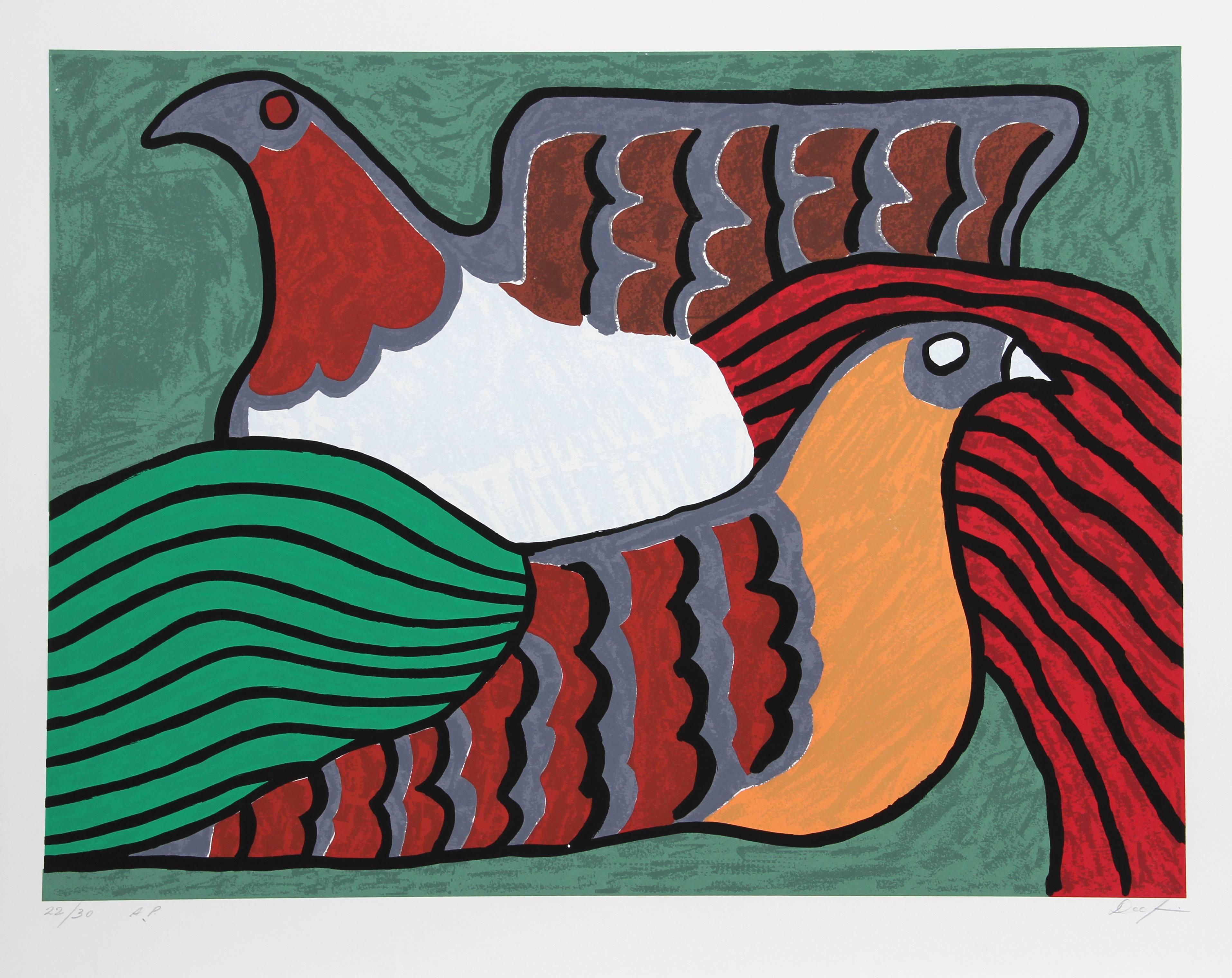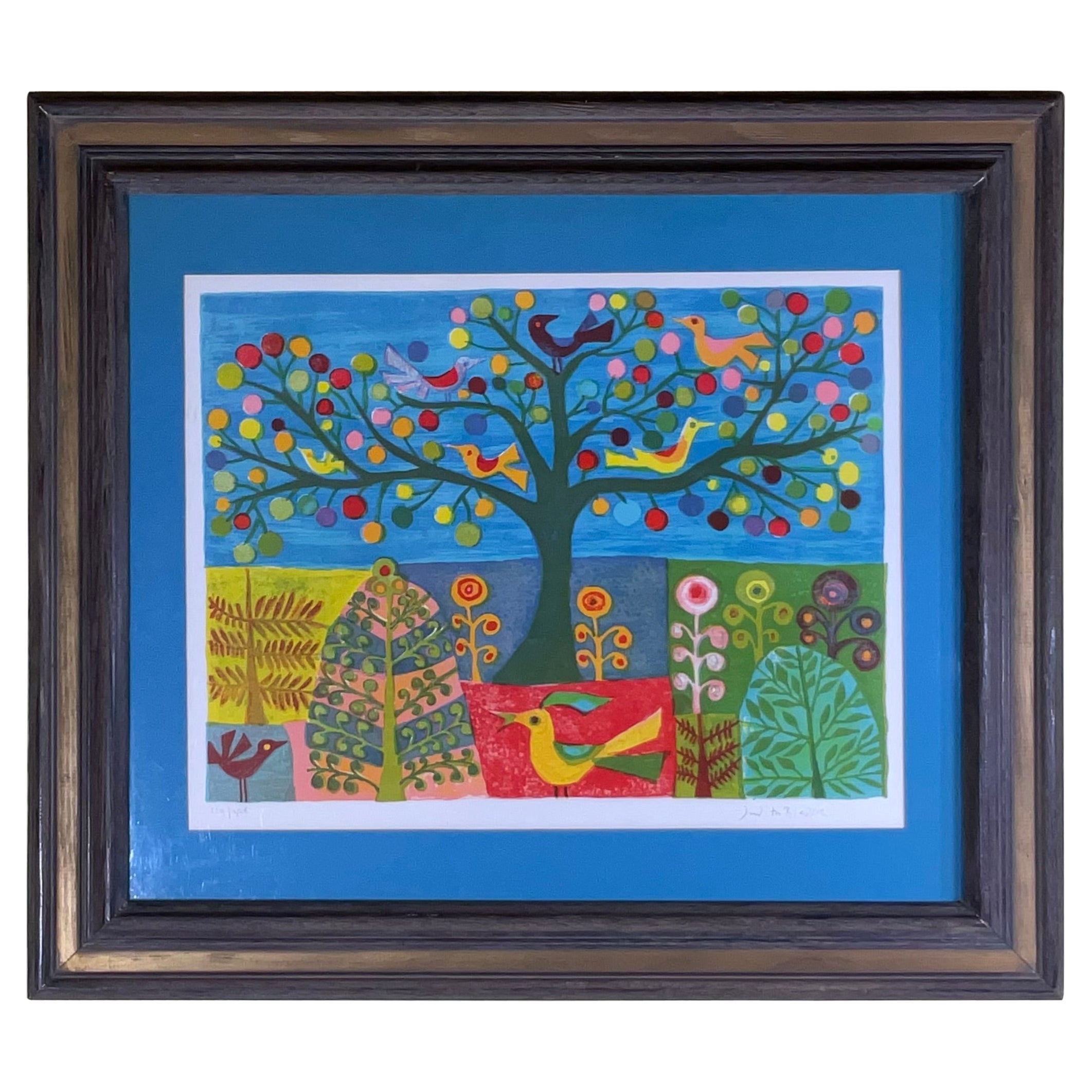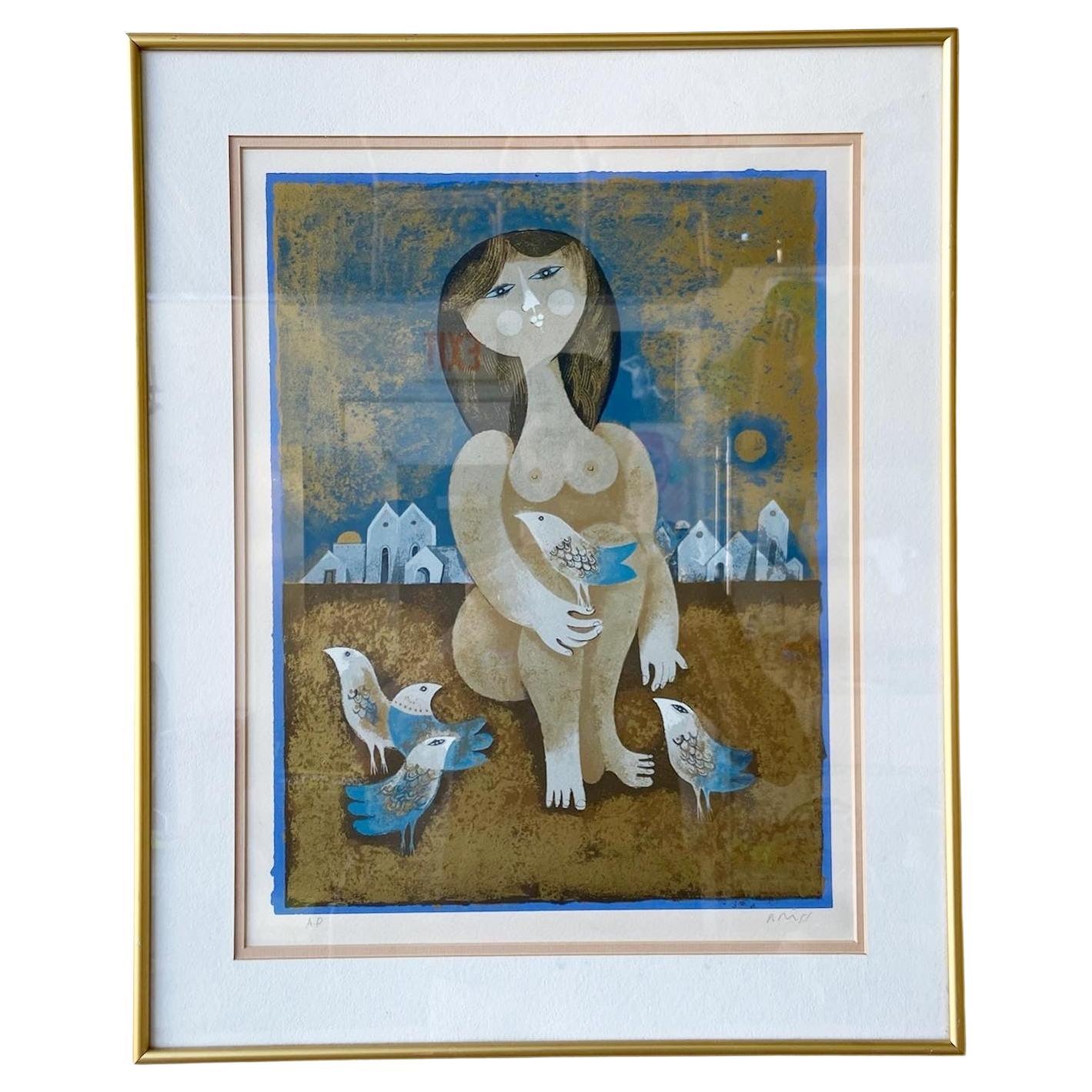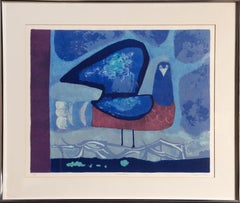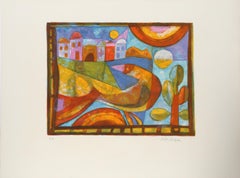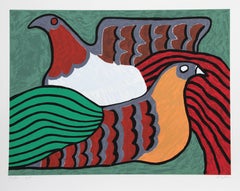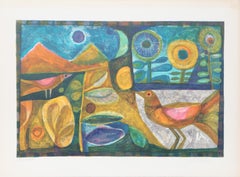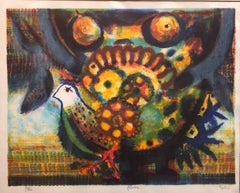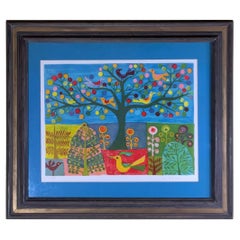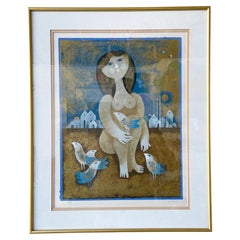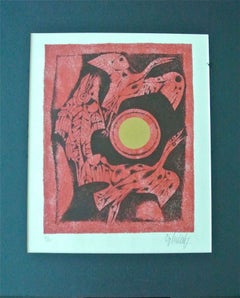Items Similar to Paloma, Framed Folk Art Lithograph by Juan Garcia Ripolles
Want more images or videos?
Request additional images or videos from the seller
1 of 7
Juan García RipollésPaloma, Framed Folk Art Lithograph by Juan Garcia Ripolles1971
1971
$1,200
£919.50
€1,057.64
CA$1,715.56
A$1,863.41
CHF 986.52
MX$22,499.57
NOK 12,315.72
SEK 11,667.19
DKK 7,897.34
About the Item
Artist: Juan Garcia Ripolles, Spanish (1932 - )
Title: Paloma
Year: 1969
Medium: Lithograph, signed and numbered in pencil
Edition: PA XXVII/XXX
Image Size: 17 x 22 inches
Frame Size: 25 x 29 inches
- Creator:Juan García Ripollés (1932, Spanish)
- Creation Year:1971
- Dimensions:Height: 25 in (63.5 cm)Width: 29 in (73.66 cm)Depth: 2 in (5.08 cm)
- Medium:
- Movement & Style:
- Period:
- Condition:In very good condition apart from normal wear due to age and history.
- Gallery Location:Long Island City, NY
- Reference Number:Seller: RO557931stDibs: LU4663328721
About the Seller
4.9
Platinum Seller
Premium sellers with a 4.7+ rating and 24-hour response times
Established in 1979
1stDibs seller since 2014
3,128 sales on 1stDibs
Typical response time: 1 hour
- ShippingRetrieving quote...Shipping from: Long Island City, NY
- Return Policy
Authenticity Guarantee
In the unlikely event there’s an issue with an item’s authenticity, contact us within 1 year for a full refund. DetailsMoney-Back Guarantee
If your item is not as described, is damaged in transit, or does not arrive, contact us within 7 days for a full refund. Details24-Hour Cancellation
You have a 24-hour grace period in which to reconsider your purchase, with no questions asked.Vetted Professional Sellers
Our world-class sellers must adhere to strict standards for service and quality, maintaining the integrity of our listings.Price-Match Guarantee
If you find that a seller listed the same item for a lower price elsewhere, we’ll match it.Trusted Global Delivery
Our best-in-class carrier network provides specialized shipping options worldwide, including custom delivery.More From This Seller
View AllLove Dove, Signed Screenprint by Earl Klein
Located in Long Island City, NY
Love Dove
Earl Klein
American (1915–1993)
Screenprint, signed, titled and numbered in pencil
Edition of 40/75
Image Size: 18 x 22.5 inches
Size: 24.5 x 29...
Category
1970s Folk Art Animal Prints
Materials
Screen
$575 Sale Price
23% Off
A Bird's Day, Lithograph by Judith Bledsoe
By Judith Bledsoe
Located in Long Island City, NY
Judith Bledsoe, American (1938 - 2013) - A Bird's Day. Year: circa 1980, Medium: Lithograph, signed in pencil, Edition: EA, Image Size: 12 x 15.5 inches, Size: 18.5 x 25.5 in. (46.9...
Category
1980s Folk Art Prints and Multiples
Materials
Lithograph
Hens, Folk Art Screenprint by Victor Delfin 1980
By Victor Delfin
Located in Long Island City, NY
This print was created by Peruvian artist Victor Delfin. Delfin found the source of his inspiration in the ancient Paracan culture of Peru, part of the broader Incan civilization. De...
Category
1980s Folk Art Animal Prints
Materials
Screen
Night Birds with Flowers, Lithograph by Judith Bledsoe
By Judith Bledsoe
Located in Long Island City, NY
Judith Bledsoe, American (1938 - 2013) - Night Birds with Flowers. Year: circa 1970, Medium: Lithograph, signed and dedicated in pencil, Edition: EA, Image Size: 17 x 25.5 inches, S...
Category
1970s Folk Art Prints and Multiples
Materials
Lithograph
Red Bird and Crow, Lithograph by Judith Bledsoe
By Judith Bledsoe
Located in Long Island City, NY
Judith Bledsoe, American (1938 - 2013) - Red Bird and Crow. Year: circa 1970, Medium: Lithograph, signed and dedicated in pencil, Edition: EA, Image Size: 15 x 21 inches, Size: 22 x...
Category
1970s Folk Art Prints and Multiples
Materials
Lithograph
...And The Children, Folk Art Lithograph by Ruth Anaya
Located in Long Island City, NY
Ruth Anaya, Canadian (1933 - ) - ...And The Children, Medium: Lithograph on natural paper, signed, titled and numbered in pencil, Edition: 89/100, Image Size: 6 x 14 inches, Frame...
Category
Mid-20th Century Folk Art Figurative Prints
Materials
Lithograph
You May Also Like
Spanish Modernist 'Paloma' Colorful Lithograph of a Bird
By Juan García Ripollés
Located in Surfside, FL
Juan García Ripollés (Castellon) was born in Alzira (Valencia, Spain) in 1932. His mother died during childbirth and not long after, he moved to Castellon, known as Castellon La Plan...
Category
1960s Modern Animal Prints
Materials
Lithograph
Signed Whimsical lithograph By Judith Bledsoe
Located in Delray Beach, FL
This vibrant lithograph depicts a whimsical scene of nature. A colorful tree, adorned with apples and birds, stands at the center of the composition. The tree is surrounded by a dive...
Category
20th Century American Contemporary Art
Materials
Wood, Paper, Acrylic
Framed and Signed Lithograph by Sam Briss
Located in Delray Beach, FL
Exceptional vintage signed and framed lithograph by Sam Briss. Features a surreal depiction of a nude woman with birds.
Category
Vintage 1970s Mid-Century Modern Prints
Materials
Glass, Paper
$396 Sale Price
20% Off
Canada Suite Signed Serigraph Birds
By Yargo De Lucca
Located in Surfside, FL
Original serigraph silkscreen prints by German/Canadian expressionist
Yargo de Lucca (1925-2008) from the “Canada Suite” series, a
hand-signed and numbered Inuit-inspired silkscreen...
Category
20th Century Animal Prints
Materials
Lithograph
Maria Gallo Nicaraguan Artist Original Hand Signed silkscreen animal print
Located in Miami, FL
María Gallo (Nicaragua, 1954)
'S/T 1', N/A
silkscreen on paper
27.6 x 19.7 in. (70 x 50 cm.)
Edition of 25
ID: GAL1401-001-025
Unframed
Hand-signed by author
Category
21st Century and Contemporary Contemporary Prints and Multiples
Materials
Engraving, Screen, Paper
Laura #2, Framed Lithograph 76/200 By Irving Amen 1950s
Located in Delray Beach, FL
An outstanding, color lithograph, titled “Laura #2” from 1950s and annotated 76/200, signed by American artist Irving Amen. The dimensions are 28″H x 22″W framed. In excellent condit...
Category
Vintage 1950s American Mid-Century Modern Prints
Materials
Paper
$237 Sale Price
40% Off
